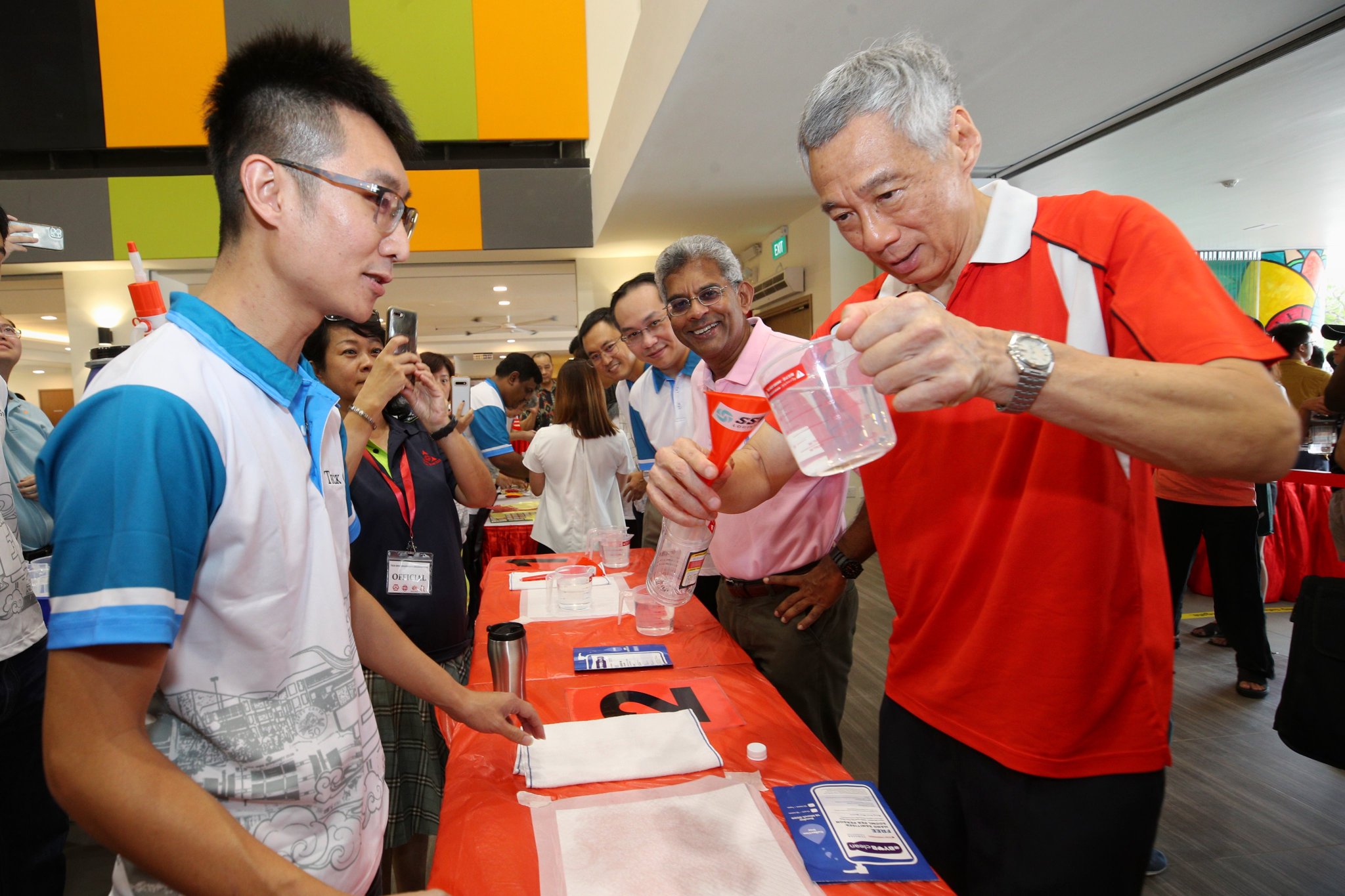Consumers are advised to prioritise handwashing over sanitiser use as regular and overuse of hand sanitisers can pose long-term health problems.
Thorough handwashing is the first defence against disease transmission. According to the US Centers for Disease Control and Prevention (CDC), washing hands with soap and water is the best way to prevent the spread of infections and decrease the risk of getting sick. This dislodges dead microbes and viral cells from the hands and washes them down the drain.
The CDC recommends that you wet your hands with running water, turn off the tap, and then scrub your hands with soap for at least 20 seconds. Rinse your hands under clean running water and then immediately wipe them with a clean towel.
No hand sanitiser has been approved by the US FDA to prevent or treat Covid-19. Although it kills bacteria and viruses, hand sanitiser is not fully effective unless used properly and in the correct amount, which many people do not. Unlike handwashing which reduces the amounts of all types of germs and chemicals on hands, hand sanitisers might not remove harmful chemicals, like pesticides and heavy metals, from hands. And they may not work well when hands are heavily soiled or greasy.
MORE NEWS
Below are some problems related to the overuse of hand sanitisers:
1. Alcohol resistance
A 2018 study in Science Translational Medicine found that multidrug-resistant bacterium Enterococcus faecium has become increasingly tolerant to the alcohols in widely used hospital disinfectants such as hand rub solutions.
A 2016 study in Pakistan that looked at 25 brands of hand sanitisers found that several bacterial strains have begun to become tolerant to them:
* Pseudomonas aeruginosa (causes pneumonia and bloodstream infection) – 64 per cent resistance
* E. coli (causes abdominal cramps, diarrhoea and vomiting) – 48 per cent resistance
* Staph aureus (causes gastrointestinal, skin, systemic and hospital-acquired infections) – 32 per cent resistance
* Micrococcus luteus (transmitted through contact with contaminated objects and surfaces) – 24 per cent resistance
In the early 2000s when Australian hospitals introduced use of more hand sanitisers, this caused a rise in enterococcal infections, which affect the digestive tract, bladder, heart and other body parts.
A 2018 Australian study looking at the behaviour of enterococcal bacteria in 139 hospitals from 1997 to 2015 showed that they indeed evolved to become 10 times more resistant to alcohol after 2010.
2. Antimicrobial resistance
Alcohol-based hand sanitisers are a possible gateway to bacteria developing resistances. It is feared that bacteria resistant to sanitisers may resist the very antibiotics commonly used to treat them.
This is possible as the mechanisms whereby alcohols kill bacteria or viruses (such as membrane damage and protein denaturation) are similar to the mechanisms antibiotics utilise to target infections.
Over the last decade, dozens of studies were published warning about this. Overuse could lead to certain bacteria adapting to survive the product, creating new superbugs that could threaten public health, warned Andrew Kemp, head of Scientific Advisory Board on the British Institute of Cleaning Science, in 2020.
3. Toxic
Too much use of alcohol-based hand sanitisers can cause skin dryness, damage and cracks, which can allow contaminants and harmful viruses to enter our bodies. It can also trigger an eczema breakout.
The American Academy of Dermatology Association says dry skin can increase your chances of picking up germs. If your skin cracks or bleeds, it is even more susceptible to bacteria.
High levels of alcohol in hand sanitiser can also cause burning and damage the surface of the eye if it gets into your eyes. The US Food and Drug Administration (FDA) advises watching over young children around sanitiser dispensers, which are often mounted at eye level and can splash.
Alcohol poisoning – causing vomiting, confusion and drowsiness – can also happen to children with just a lick of hand sanitiser. In severe cases, there can be respiratory failure, blood acidity, coma and even death in young children.
The American Association of Poison Control Centers reported over 9,000 cases of alcohol poisoning from hand sanitisers in children under 12 years in the first 5 months of 2020 alone.
In October 2020, the National Toxicological and Forensic Sciences Institute in Spain reported 874 cases of intoxication from hand sanitising gels, two-thirds of which were young children who had drunk it, inhaled it or got sanitiser in their eyes. In the UK, there were 398 cases of poisoning reported to the National Poisons Information Service in 2020, an increase of 157 per cent compared to 2019.
4. Sanitiser tips
a. Use one with an alcohol concentration of 60-95 per cent. Products with a lower alcohol concentration, or non-alcohol-based hand sanitisers, are subpotent. A study in Emerging Infectious Diseases indicates that low-alcohol concentration gels spread germs around without killing them. And concentrations above 95 per cent are less effective because alcohol needs a certain amount of water to denature the proteins of microbes and inactivate viruses.
b. Apply the correct amount, too little will not quickly kill germs. A common mistake is using too little sanitiser to cover both hands, with dispensers tending to release too little in a single pump. The World Health Organisation (WHO) recommends using at least a coin-sized drop. Tip: "If hands feel dry after being rubbed together for less than 10-15 seconds, it is likely that an insufficient volume of product was applied," says the WHO.
c. Rub all over hands, including between the fingers and on the back of hands, until completely dry (about 20-30 seconds). Don't rinse or wipe off the product, or it won't work as well.
d. Ensure it is completely dry on your hands before continuing activities that may involve heat, sparks, static electricity, or open flames.
e. Keep it out of children's reach; and away from heat or flame as hand sanitiser is flammable – never store in the car or anywhere above 105 degrees Fahrenheit.
Mohideen Abdul Kader
President
Consumers Association of Penang (CAP)
The views expressed in this article are the author's own and do not necessarily reflect those of the New Straits Times
RELATED VIDEOS
Kelantan to get 60 new ambulances - Khairy
0:37/0:53
RELATED ARTICLES
NATION Aug 11, 2022 @ 5:36pm
NATION Aug 22, 2022 @ 4:16pm
REGION Sep 23, 2022 @ 9:09am
NATION Oct 21, 2022 @ 6:05pm
MOST POPULAR

POLITICS 4 hours ago
Annuar Musa, Shahidan's wife and Ismail's wife sacked from Umno [NSTTV]

POLITICS 6 hours ago
Is PN out to sideline Muhyiddin?

NATION Dec 8, 2022 @ 10:49pm
Anwar issues another letter of demand

CRIME & COURTS Dec 7, 2022 @ 8:18pm
PN lodges police report against PM Anwar

NATION Dec 7, 2022 @ 4:37pm
Muhyiddin, Zafrul and Khairy to be hauled up over RM600 billion issue
STORIES FROM SAYS

Dec 8, 2022 @ 10:12am
Bakal Dibimbing 32 Tutor Terbaik, MCPlus Kembali Dengan Seminar SPM Terbesar Malaysia!

3 hours ago
"Macam Bawa Dulang" - Gelagat Pelajar Blur Masa Naik Pentas Ambil Skrol Ini Menghiburkan

3 hours ago
[VIDEO] M'sian Man Caught On CCTV For Stealing Women's Underwear At A PPR In KL

4 hours ago
Top Malaysian Influencers Share Their Journeys And How They Got Where They Are Today
https://says.com/my/tech/whatsapp-has-a-poll-feature
Thorough handwashing is the first defence against disease transmission. According to the US Centers for Disease Control and Prevention (CDC), washing hands with soap and water is the best way to prevent the spread of infections and decrease the risk of getting sick. This dislodges dead microbes and viral cells from the hands and washes them down the drain.
The CDC recommends that you wet your hands with running water, turn off the tap, and then scrub your hands with soap for at least 20 seconds. Rinse your hands under clean running water and then immediately wipe them with a clean towel.
No hand sanitiser has been approved by the US FDA to prevent or treat Covid-19. Although it kills bacteria and viruses, hand sanitiser is not fully effective unless used properly and in the correct amount, which many people do not. Unlike handwashing which reduces the amounts of all types of germs and chemicals on hands, hand sanitisers might not remove harmful chemicals, like pesticides and heavy metals, from hands. And they may not work well when hands are heavily soiled or greasy.
MORE NEWS
China launches elderly vaccination drive but health fears linger
1,706 new cases detected on Saturday, says Health Ministry
Don't neglect child, adolescent mental health, says Dr Noor Azmi
#HEALTH: Keeping hands clean
Below are some problems related to the overuse of hand sanitisers:
1. Alcohol resistance
A 2018 study in Science Translational Medicine found that multidrug-resistant bacterium Enterococcus faecium has become increasingly tolerant to the alcohols in widely used hospital disinfectants such as hand rub solutions.
A 2016 study in Pakistan that looked at 25 brands of hand sanitisers found that several bacterial strains have begun to become tolerant to them:
* Pseudomonas aeruginosa (causes pneumonia and bloodstream infection) – 64 per cent resistance
* E. coli (causes abdominal cramps, diarrhoea and vomiting) – 48 per cent resistance
* Staph aureus (causes gastrointestinal, skin, systemic and hospital-acquired infections) – 32 per cent resistance
* Micrococcus luteus (transmitted through contact with contaminated objects and surfaces) – 24 per cent resistance
In the early 2000s when Australian hospitals introduced use of more hand sanitisers, this caused a rise in enterococcal infections, which affect the digestive tract, bladder, heart and other body parts.
A 2018 Australian study looking at the behaviour of enterococcal bacteria in 139 hospitals from 1997 to 2015 showed that they indeed evolved to become 10 times more resistant to alcohol after 2010.
2. Antimicrobial resistance
Alcohol-based hand sanitisers are a possible gateway to bacteria developing resistances. It is feared that bacteria resistant to sanitisers may resist the very antibiotics commonly used to treat them.
This is possible as the mechanisms whereby alcohols kill bacteria or viruses (such as membrane damage and protein denaturation) are similar to the mechanisms antibiotics utilise to target infections.
Over the last decade, dozens of studies were published warning about this. Overuse could lead to certain bacteria adapting to survive the product, creating new superbugs that could threaten public health, warned Andrew Kemp, head of Scientific Advisory Board on the British Institute of Cleaning Science, in 2020.
3. Toxic
Too much use of alcohol-based hand sanitisers can cause skin dryness, damage and cracks, which can allow contaminants and harmful viruses to enter our bodies. It can also trigger an eczema breakout.
The American Academy of Dermatology Association says dry skin can increase your chances of picking up germs. If your skin cracks or bleeds, it is even more susceptible to bacteria.
High levels of alcohol in hand sanitiser can also cause burning and damage the surface of the eye if it gets into your eyes. The US Food and Drug Administration (FDA) advises watching over young children around sanitiser dispensers, which are often mounted at eye level and can splash.
Alcohol poisoning – causing vomiting, confusion and drowsiness – can also happen to children with just a lick of hand sanitiser. In severe cases, there can be respiratory failure, blood acidity, coma and even death in young children.
The American Association of Poison Control Centers reported over 9,000 cases of alcohol poisoning from hand sanitisers in children under 12 years in the first 5 months of 2020 alone.
In October 2020, the National Toxicological and Forensic Sciences Institute in Spain reported 874 cases of intoxication from hand sanitising gels, two-thirds of which were young children who had drunk it, inhaled it or got sanitiser in their eyes. In the UK, there were 398 cases of poisoning reported to the National Poisons Information Service in 2020, an increase of 157 per cent compared to 2019.
4. Sanitiser tips
a. Use one with an alcohol concentration of 60-95 per cent. Products with a lower alcohol concentration, or non-alcohol-based hand sanitisers, are subpotent. A study in Emerging Infectious Diseases indicates that low-alcohol concentration gels spread germs around without killing them. And concentrations above 95 per cent are less effective because alcohol needs a certain amount of water to denature the proteins of microbes and inactivate viruses.
b. Apply the correct amount, too little will not quickly kill germs. A common mistake is using too little sanitiser to cover both hands, with dispensers tending to release too little in a single pump. The World Health Organisation (WHO) recommends using at least a coin-sized drop. Tip: "If hands feel dry after being rubbed together for less than 10-15 seconds, it is likely that an insufficient volume of product was applied," says the WHO.
c. Rub all over hands, including between the fingers and on the back of hands, until completely dry (about 20-30 seconds). Don't rinse or wipe off the product, or it won't work as well.
d. Ensure it is completely dry on your hands before continuing activities that may involve heat, sparks, static electricity, or open flames.
e. Keep it out of children's reach; and away from heat or flame as hand sanitiser is flammable – never store in the car or anywhere above 105 degrees Fahrenheit.
Mohideen Abdul Kader
President
Consumers Association of Penang (CAP)
The views expressed in this article are the author's own and do not necessarily reflect those of the New Straits Times
RELATED VIDEOS
Kelantan to get 60 new ambulances - Khairy
0:37/0:53
RELATED ARTICLES
NATION Aug 11, 2022 @ 5:36pm
Health Ministry discussing annual Covid-19 vaccination
NATION Aug 22, 2022 @ 4:16pm
Covid-19 admissions, active cases see a decline, says Health D-G
REGION Sep 23, 2022 @ 9:09am
Health workers stage protest, demand for due payments
NATION Oct 21, 2022 @ 6:05pm
Covid-19: XBB wave detected, Health Ministry foresees slight increase in cases
MOST POPULAR
- 21m
Hadi shortlisted by PN as opposition leader in Dewan Rakyat - 24m
Footballers' brains likely to decline more than average person after 65: Study - 30m
PM to meet King this afternoon to present deputy ministers' list - 42m
Home Ministry denies Kimanis detainees mistreated, says issue must not be "overplayed" - 45m
Court rejects Siti Bainun's bid to get prosecution witnesses' statements - 51m
No need to review PTMP mega project, Penang govt tells NGOs - 1h
Portugal coach Santos hits jackpot with bold calls

POLITICS 4 hours ago
Annuar Musa, Shahidan's wife and Ismail's wife sacked from Umno [NSTTV]

POLITICS 6 hours ago
Is PN out to sideline Muhyiddin?

NATION Dec 8, 2022 @ 10:49pm
Anwar issues another letter of demand

CRIME & COURTS Dec 7, 2022 @ 8:18pm
PN lodges police report against PM Anwar

NATION Dec 7, 2022 @ 4:37pm
Muhyiddin, Zafrul and Khairy to be hauled up over RM600 billion issue
STORIES FROM SAYS

Dec 8, 2022 @ 10:12am
Bakal Dibimbing 32 Tutor Terbaik, MCPlus Kembali Dengan Seminar SPM Terbesar Malaysia!

3 hours ago
"Macam Bawa Dulang" - Gelagat Pelajar Blur Masa Naik Pentas Ambil Skrol Ini Menghiburkan

3 hours ago
[VIDEO] M'sian Man Caught On CCTV For Stealing Women's Underwear At A PPR In KL

4 hours ago
Top Malaysian Influencers Share Their Journeys And How They Got Where They Are Today
https://says.com/my/tech/whatsapp-has-a-poll-feature



